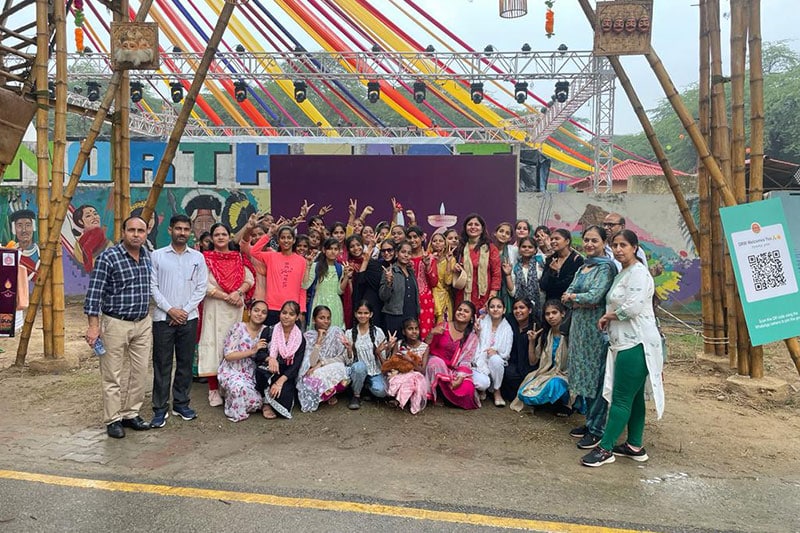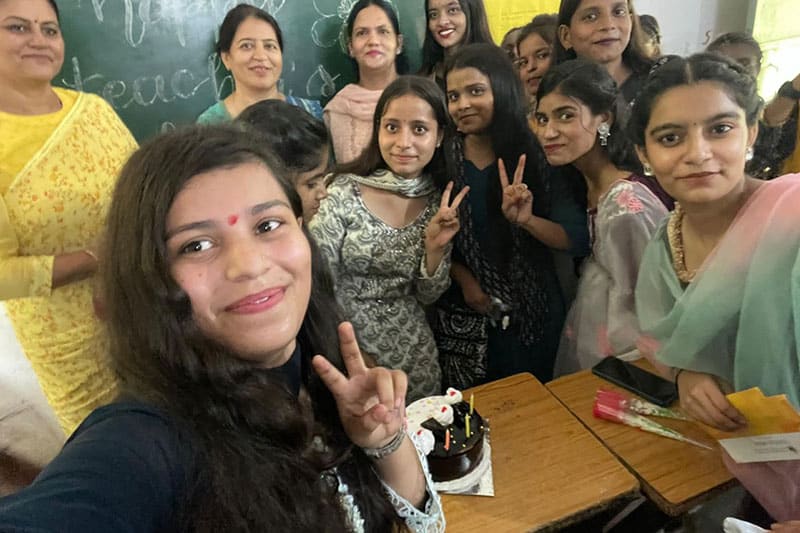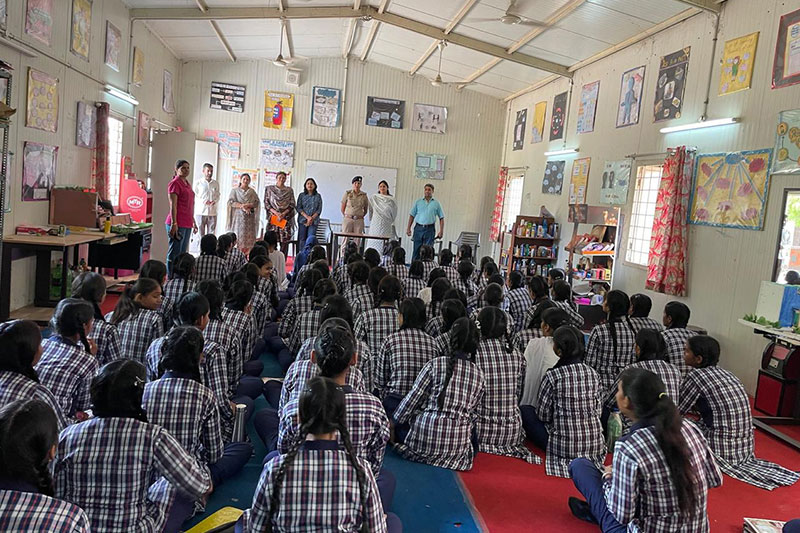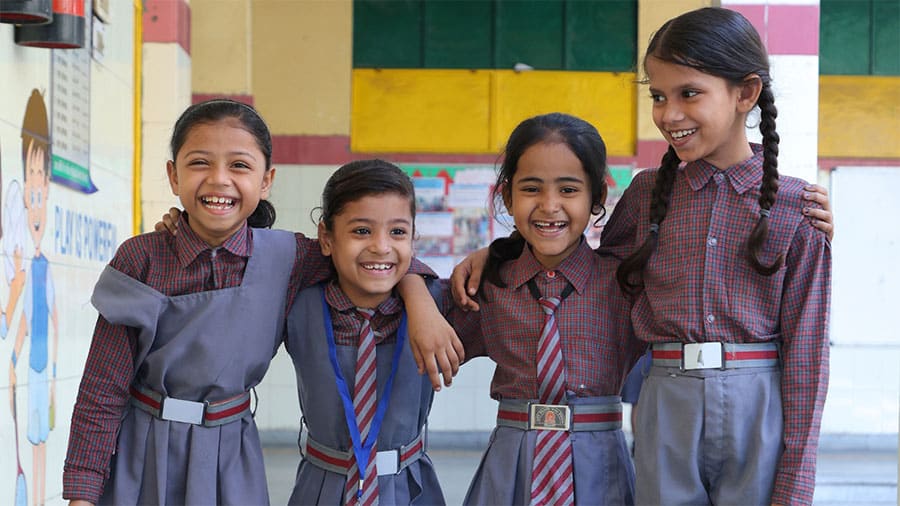Supporting Healthy Lives - 2025 Finalist
Government Girls Senior Secondary School,
NIT 5
India
The Indian school transforming the lives of at-risk girls by prioritising their physical health and mental wellbeing through public education
Government Girls Senior Secondary School, NIT 5, a state secondary school in Faridabad, Haryana, India, is transforming the lives of at-risk girls by interlinking nutritional programmes, physical wellbeing, and mental health support with education to break down societal barriers and ensure no girl is left behind. In the disadvantaged community, many young women face gender-based violence, discrimination, poverty, and extreme hunger. Girls are often forced into early marriage, or are left as primary caregivers in the home, resulting in them abandoning school, and those who don't often struggle with mental distress and emotional trauma.
To address these systematic challenges, the school has implemented a wellbeing-focused approach that includes physical and mental health and wellbeing, nutritional support and community engagement to help students move beyond their circumstances. A nutrition awareness programme teaches students how to eat healthily, and students tend a school vegetable garden. Physical education activities keep them active, and mental health workshops, peer support circles, and mindfulness sessions equip them to cope, with teachers doubling as mentors and counsellors. Improving English language skills is a current challenge in terms of educational development, and the school has set up a language lab to address this.
In Grade 12, teachers engage with students and parents to highlight the importance of higher education and career choice to support girls in building careers. The school facilitates parent workshops on health, nutrition, and education, and teachers and community volunteers personally visit homes, inviting parents to attend.
School attendance is over 94%, and students consistently rank high in state-level exams. It is among the most sought-after schools in the region, and enrolment remains steady at over 1,310 students. More students participate in extracurricular activities, excelling in yoga, sports, and cultural competitions. Many learners pursue higher education, competitive exams, and leadership roles within their communities. Students spread their learnings to family and neighbours, and community engagement has become two-way, with families starting to invest in the school through donations to support growth. NGOs also contribute to enhancing infrastructure and services. The school has become a benchmark for other schools in the region, and documents and shares best practices at state level, as a model worth replicating.
By proactively providing the tools to overcome adversity in its redesigned wellbeing-focused model, the school is empowering a generation of women to confidently embrace the opportunities they deserve.




